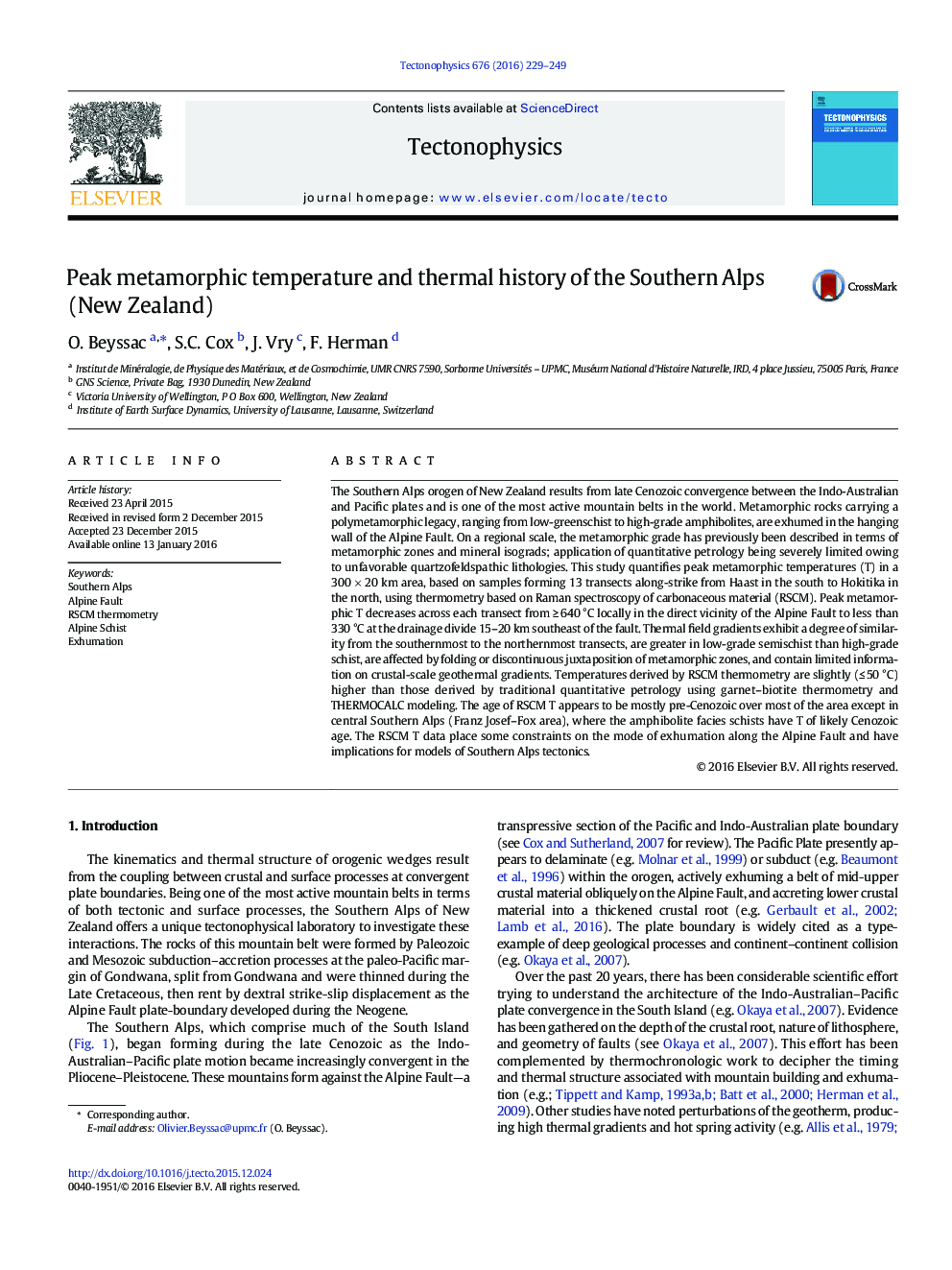| کد مقاله | کد نشریه | سال انتشار | مقاله انگلیسی | نسخه تمام متن |
|---|---|---|---|---|
| 6433421 | 1636721 | 2016 | 21 صفحه PDF | دانلود رایگان |
- RSCM thermometry quantifies peak metamorphic temperatures in Alpine Fault hanging wall.
- RSCM T gradients across sub-greenschist to amphibolite facies rocks are systematic.
- Field gradients of RSCM T are affected by faults and folds.
- RSCM T constrain Southern Alps uplift and exhumation of a greywacke-schist transition.
- Peak temperatures for Alpine Schist are mostly Mesozoic, but locally Cenozoic.
The Southern Alps orogen of New Zealand results from late Cenozoic convergence between the Indo-Australian and Pacific plates and is one of the most active mountain belts in the world. Metamorphic rocks carrying a polymetamorphic legacy, ranging from low-greenschist to high-grade amphibolites, are exhumed in the hanging wall of the Alpine Fault. On a regional scale, the metamorphic grade has previously been described in terms of metamorphic zones and mineral isograds; application of quantitative petrology being severely limited owing to unfavorable quartzofeldspathic lithologies. This study quantifies peak metamorphic temperatures (T) in a 300 Ã 20 km area, based on samples forming 13 transects along-strike from Haast in the south to Hokitika in the north, using thermometry based on Raman spectroscopy of carbonaceous material (RSCM). Peak metamorphic T decreases across each transect from â¥Â 640 °C locally in the direct vicinity of the Alpine Fault to less than 330 °C at the drainage divide 15-20 km southeast of the fault. Thermal field gradients exhibit a degree of similarity from the southernmost to the northernmost transects, are greater in low-grade semischist than high-grade schist, are affected by folding or discontinuous juxtaposition of metamorphic zones, and contain limited information on crustal-scale geothermal gradients. Temperatures derived by RSCM thermometry are slightly (â¤Â 50 °C) higher than those derived by traditional quantitative petrology using garnet-biotite thermometry and THERMOCALC modeling. The age of RSCM T appears to be mostly pre-Cenozoic over most of the area except in central Southern Alps (Franz Josef-Fox area), where the amphibolite facies schists have T of likely Cenozoic age. The RSCM T data place some constraints on the mode of exhumation along the Alpine Fault and have implications for models of Southern Alps tectonics.
Journal: Tectonophysics - Volume 676, 26 April 2016, Pages 229-249
